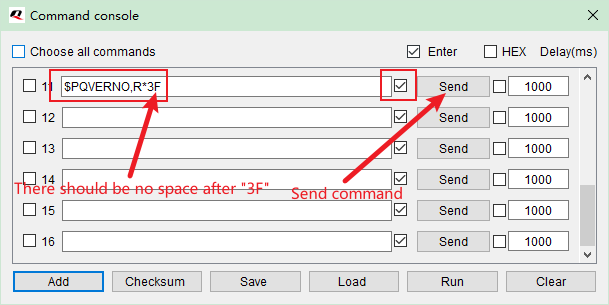Good morning,
I’ve designed a board with the L96 module. Accordingly to the document “L96 Hardware Design” such a module should enter in standby mode by pulling down its EXTINT0 pin and in such a mode the current consumption should reduce from a value around 20mA down to 0.45mA.
It seems it doesn’t happen so I think the L96 does not enter in standby mode by pulling down the EXTINT0 pin. I tried both with the original firmware and after flashing the L96 with the I2C interface firmware I received in another post.
Just in case, is it possible to have the UART version fw, so I can check again?
There is any other possible reason for this missing standby?
Thank you and best regards
Hi @Rigamonti
Please use the “$PQVERNO,R*3F” command to check the version of the module and let me know.
Please provide your email address and I will send you the relevant information via email.
Hi George, thank you for your answer.
I’ve tried to send the $PQVERNO,R*3F command through the Qnss software, “Command console” tool. By opening the “text data” window I can see the sent message, but I can’t see any answer.
By the way, I’ve already flashed the L96 with the I2C firmware, so I’m not sure the Qnss software can still work.
My email address is matteo.rigamonti@seed-it.it
Thank you
Matteo
Hi @Rigamonti
You need to add a carriage return and line feed when sending commands.
I have sent you the relevant information via email, please check.
Hi George, thank you for your reply.
Thanks for documentation; I already downloaded it from your website and everything should be correct.
The command $PQVERNO,R*3F, sent by the QGNSS software tool with the “enter” option flagged (the sent string include CR and LF characters), does not receive any answer.
The L96 module continuously send 00 characters and do not react to the above command.
I would like to point out again the installed fw is the I2C version, a colleague of yours sent me. I’ve tried to flash again such a firmware and the operation properly works, so the module should be working.
Are you sure I should receive an answer to the above command even thought it is sent by the QGNSS tool, i.e. by the UART interface on my L96 with the I2C firmware?
Can you send me the UART firmware, so I can reflash my module and repeat the test, please?
Thank you for your support
Matteo
Hi @Rigamonti
- Firmware that supports I2C also supports UART communication.
- The command sending method is shown in the figure below.

- I will send you the single UART version via email.
Hi George, I repeated the firmware upgrade operation with the fw you sent me and now the module responds to the $PQVERNO,R*3F command:
W->
HEX: 24 50 51 56 45 52 4e 4f 2c 52 2a 33 46 0d 0a
String: $PQVERNO,R*3F
$PQVERNO,R,L96NR11A02SC,2023/05/29,02:33*2A
So let’s switch back to the original issue, i.e. the current consumption in stand-by mode: by forcing down the EXTINT0 pin, the current consuption remains around 25mA, instead of going down to the stand-by value (0.45mA from datasheet).
If I send the stand-by command via UART interface ($PMTK161,0*28), it works and the module reduces its power consumption.
So the EXTINT0 pin seems to have no effect on the standby mode.
Is there any possible reason?
Thank you and best regards
Matteo
Hi @Rigamonti
Please refer to the figure below:
How is the current module connected? Please check whether the high power consumption is caused by leakage of the module pins.
Hi George,
by reading the two points, it seems the difference in power consumption due to the internal pull up resistor is only 100uA. In our application we have an external contribution around 300uA when the EXTINT0 peek is kept low.
But I see around 25mA of power consumption while keeping the EXTINT0 pin low, i.e. exactly the same current of the Full On mode (we don’t see any change). While by sending the standby command, the current fall down to some hundreds of microamperes.
It seems the EXTINT0 does not react to the low input level by forcing the standby mode.
Thank you
Matteo
